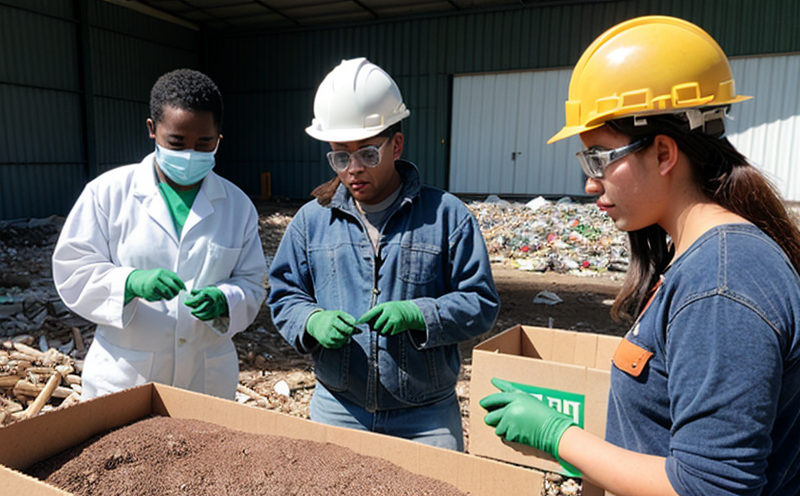Daily Use Cleaning Resistance of Eco-Friendly Toys
The demand for eco-friendly toys has seen a significant increase in recent years. These toys are designed to be sustainable, biodegradable, and made from recycled materials. However, the durability and longevity of these toys under daily use conditions present unique challenges. The cleaning resistance test assesses how well these toys withstand repeated cleaning processes without losing their essential properties.
The cleaning process is a critical aspect of toy care, especially for items that come into direct contact with children. Ensuring that eco-friendly toys can maintain their quality and safety after multiple washings is crucial. This service evaluates the cleaning resistance by subjecting samples to various cleaning methods under controlled conditions. The test helps manufacturers understand how well their products perform during regular household cleaning routines.
The testing process involves several stages, including specimen preparation, cleaning method selection, and evaluation of post-cleaning properties. Specimens are prepared according to standard procedures to ensure consistent results. Cleaning methods can vary widely depending on the type of toy material used; for instance, some materials may require gentle washing with water only, while others might need specific detergents or treatments.
The primary goal of this service is not just to assess basic cleaning resistance but also to provide insights into how these toys behave under real-world conditions. This includes evaluating the impact on colorfastness, durability, and overall integrity of the toy after repeated cleanings. By understanding these factors, manufacturers can make informed decisions about material selection and product design.
One key aspect of this service is compliance with relevant standards such as ISO 14972:2018 which provides guidelines for ensuring safety in healthcare settings but also applicable to toys due to their close contact with children. Additionally, ASTM F963-17 specifies requirements for the flammability, mechanical stability, and other properties of consumer products intended for use by children under 14 years old including toys.
| Application | Description |
|---|---|
| Eco-Friendly Toy Manufacturers | Demonstrate the durability and longevity of their products under daily use conditions. |
| Toy Retailers | Ensure that toys meet all applicable safety and quality standards before listing them for sale. |
| R&D Engineers | Develop new materials or improve existing ones to enhance cleaning resistance without compromising on other essential properties. |
| Quality Managers and Compliance Officers | Verify compliance with international standards ensuring consistent product quality across different markets globally. |
- Evaluates colorfastness, durability, and integrity of toys after multiple washings.
- Ensures that recycled materials maintain their essential properties during regular cleaning processes.
- Demonstrates compliance with relevant international standards such as ISO 14972:2018 and ASTM F963-17.
This service plays a vital role in the lifecycle of eco-friendly toys, from development to retail. By providing robust data on cleaning resistance, it supports manufacturers in creating products that are both sustainable and safe for children. It also assists retailers in making informed purchasing decisions based on rigorous testing protocols.
Applied Standards
The daily use cleaning resistance of eco-friendly toys is evaluated using a combination of internationally recognized standards that ensure both safety and performance. These include ISO 14972:2018, which sets out guidelines for ensuring safety in healthcare settings but can be applied to toys due to their close contact with children. Additionally, ASTM F963-17 specifies requirements for the flammability, mechanical stability, and other properties of consumer products intended for use by children under 14 years old including toys.
These standards provide a framework that ensures consistency in testing procedures across different laboratories worldwide. Compliance with these standards is crucial as it not only guarantees product safety but also enhances consumer confidence. The tests conducted adhere strictly to the specified parameters outlined in these standards, ensuring accurate and reliable results.
Industry Applications
| Application | Description |
|---|---|
| Eco-Friendly Toy Manufacturers | Demonstrate the durability and longevity of their products under daily use conditions. |
| Toy Retailers | Ensure that toys meet all applicable safety and quality standards before listing them for sale. |
| R&D Engineers | Develop new materials or improve existing ones to enhance cleaning resistance without compromising on other essential properties. |
| Quality Managers and Compliance Officers | Verify compliance with international standards ensuring consistent product quality across different markets globally. |
Environmental and Sustainability Contributions
Eco-friendly toys are designed to be sustainable, biodegradable, and made from recycled materials. The cleaning resistance test is essential in ensuring that these toys maintain their quality and safety even after multiple cleanings. This helps reduce waste by extending the life of toys, thereby promoting environmental sustainability.
By using this service, manufacturers can ensure that their products contribute positively to environmental conservation efforts. For instance, by enhancing cleaning resistance, they minimize the frequency at which toys need replacement, reducing overall resource consumption and waste generation. This aligns with broader sustainability goals such as circular economy principles where resources are reused rather than discarded.
This service supports the creation of toys that not only meet safety standards but also contribute to a more sustainable future. It encourages responsible consumer behavior by providing information on how long a toy can last when properly maintained, thus promoting resource efficiency and environmental protection.





